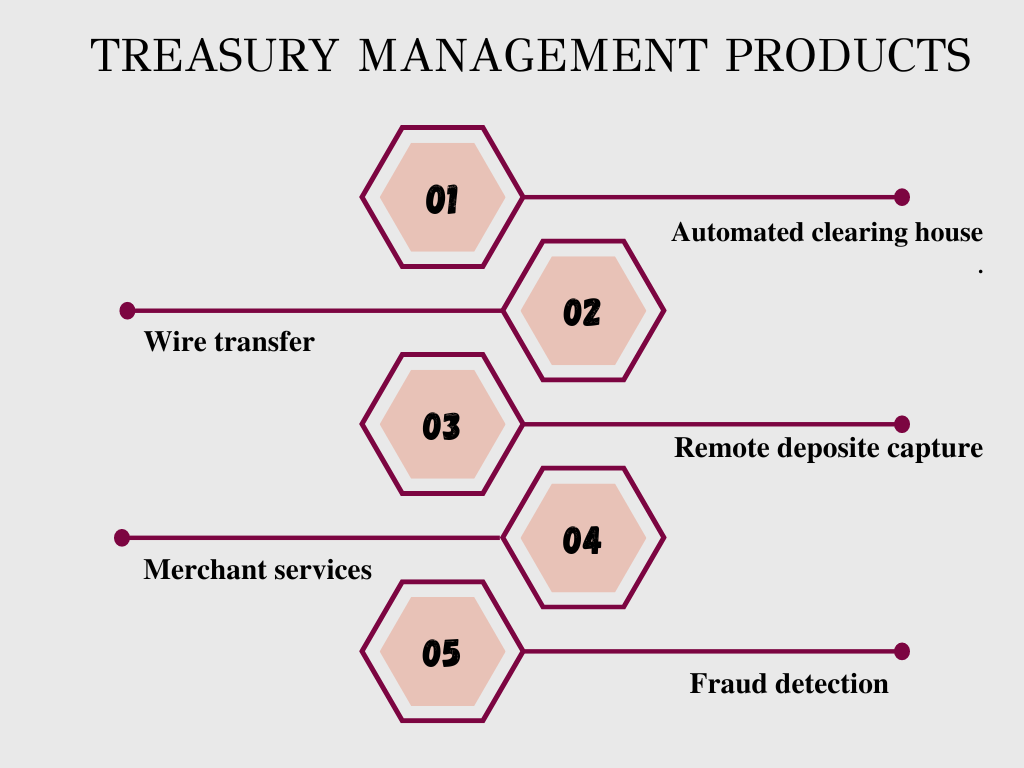Treasury Management

What is treasury management?
Treasury management is the process of managing a company’s daily cash flows and larger-scale decisions made when it comes to finances. It is a key component of business operations. In the business landscape, the importance of treasury management cannot be denied. Treasury management services simplify business finance. It manages cash and investments, establishes and maintains credit lines optimizes investment returns and other financial assets. It is the overall management of business holdings. The process is administrated by an organization’s finance department under the Chief Financial Officer’s (CFO) guidance.
Difference between treasury and finance
The main difference between treasury and finance is the domain and timeline of their roles in the enterprise. Treasury management focuses on short-term goals while finance focuses on long-term goals. It includes the periodic examination of income and expense budgets while financial management includes the preparation and presentation of financial statements.
The primary goal of treasury management
The supreme goal of TM is to enhance financial liquidity and minimize risk. It ensures that the business always has the access to use surplus cash efficiently. For any company to strive financially, managing its money effectively is important. Even the rigorous TM systems make clear that they can optimize cash flow.
How much does a TMS cost?
The cost of a TMS depends on the features and functionality required by the business. It is important to select a system that meets the specific needs of the business.
Main areas of treasury management
Treasuries are caretakers of business cash and regulate through:
- The amount held
- Liquidity
The sheer size of the balance sheet and relative stickiness is its two main levers. TM processes can vary from company to company but the majority of them determine the design process for operations and procedures.
Benefits of treasury management
Fraud and risk management are two important concerns as your business grows. Following are the key benefits of treasury management.
1. Time efficiency:
By reducing hours spent on authorization, time can be saved.
2. Cost saving:
Using TM tools and resources to locate the cost of bank transactions helps businesses to check where they might pursue additional fees.
3. Cash visibility and forecasting:
Cash visibility and forecasting allow you to make positive decisions and gain control over financial processes which reduces costly errors.
4. Fraud protection:
It protects you against fraud and infringements. With treasury services, owners can see suspicious activities happening in the company.
5. Encourages financial growth:
TM is an effective tool that helps you to generate more wealth and increase the profit ratio. Greater financial growth ensures that the company has more money to pay its employees.

Treasury management services
Outsourced treasury services help corporate treasurers in achieving strategic goals. Here is a list of TM services offered by an advisory and consulting firm.
Setting up a treasury function
TM experts design and execute a management system that results in reduced borrowing, hedging, and a reduction in bank transaction costs.
Treasury consulting
A team of external treasures works with the organization to advise on treasury matters. They develop strategies for financial risk management, liquidity, and cash management.
Transaction-related treasury advice
The external treasury advisors assist in locating and handling financial risk in a financial advisory transaction. The advisors assist
Buyers
Post-acquisition
Companies that are refinancing debt
Businesses that are experiencing restructuring challenges
Treasure optimization
The treasury management service providers help to find where the organization’s treasury function falls. The current state of the treasury team may be fragmented, controlled, or optimized.
Payments and FX
Payments and FX capabilities of treasury services experts can optimize the organization’s cross-currency treasury potential. It is done through global formatting guides that provide up-to-date requirements to facilitate properly formatted payments.
FX risk management
Foreign exchange risk is the most common type of risk that treasures solve. These services include identifying the risk by gathering underlying exposures from cash flow forecasts.
Liquidity management
All treasures need solutions to optimize liquidity and working capital. liquid management services help the treasury team to tackle challenges that help to optimize cash flow. It also lowers the risk of focusing on process automation and custom structures.
Receivables management
This service provides capability at each step of the receivable process and works in conjunction with the treasury team. It reduces the days’ sales outstanding(DSO) and improves working capital.
Extended services include;
- Treasury research
- Industry benchmark studies
- Advisory services
Treasury management products
Here are the essential treasury management products
- Automated clearing house
- Wire transfer
- Remote deposit capture
- Merchant services
- Fraud detection

Risks of not using TM services
Businesses that do not use TM services are at greater risk of a financial crisis. Poor cash flow forecasting leads to liquidity problems. The failure to pay bills on time results in damage to a business crisis. It helps to improve cash flow forecasting, reduce cost and better manage treasury processes.
Yoy May Also Like

Investment Dashboard
The investment dashboard is an integrated panel for tracking, reconsidering, and scaling the performance of investments of the organization. This panel...

Role Of Virtual CFO In An SME
A Virtual CFO, by increasing their financial control and visibility, enables business owners in an informed decision-making process. The roles and responsibilities...

Business Gap Analysis
A Business Gap Analysis is a strategic analysis tool that helps to identify the gap between two business states, expected and current, and comes up with...

Business Process Re-engineering
Business process reengineering is a management strategy and a systematic approach to improve product quality and reduce organizational cost, service and speed...
